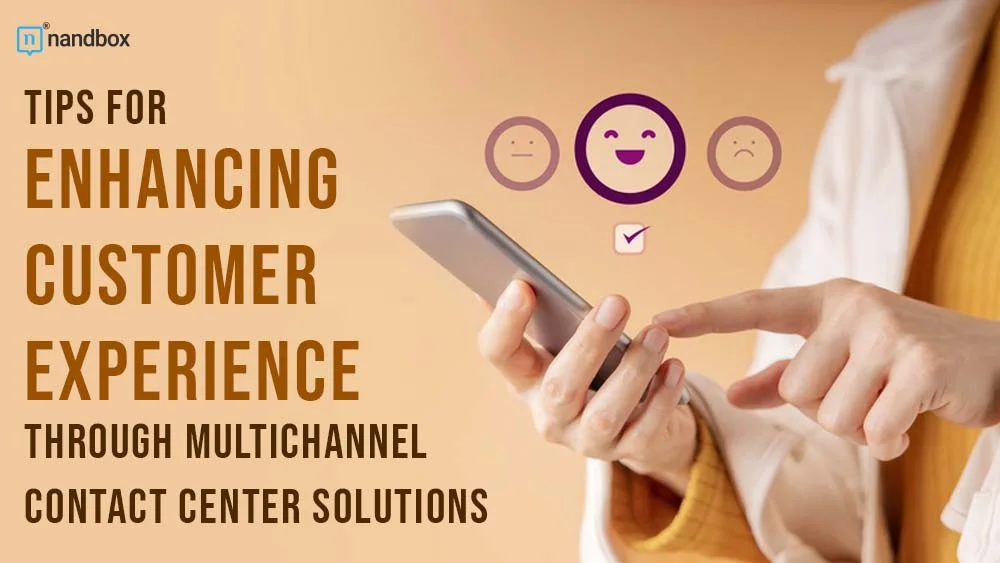In today’s customer service landscape, businesses must innovate to meet evolving expectations. Crafting an exceptional customer experience is no longer a luxury but a core component of competitive advantage. Central to this endeavor is the strategic use of multichannel contact center solutions that offer seamless service across various platforms. Keep reading to uncover actionable strategies that can help your business enhance the customer experience and gain an edge in the marketplace.
Understanding Customer Expectations in a Multichannel Environment

As the digital age progresses, customers are increasingly seeking swift and efficient service across multiple channels. They expect consistent quality whether they reach out via social media, email, phone, or live chat. Understanding this expectation is the first step towards optimizing a multichannel contact strategy.
The rise of omnichannel interactions has led to customers valuing integrated experiences that allow them to transition between channels without repeating their concerns. Businesses must therefore synchronize their platforms to provide a seamless user journey. This integration ensures that no matter the point of contact, the service remains uniform and of high quality.
Assessing customer feedback regularly can provide insights into their expectations and identify areas for improvement. Proactive engagement, such as follow-up calls or personalized emails, can make customers feel valued and heard. By doing so, a business can build stronger relationships with its clientele.
Incorporating analytics and customer relationship management (CRM) tools can help in anticipating customer needs and preferences. By leveraging such technologies, businesses can adjust their strategies to meet customer expectations more accurately, thus fostering loyalty and satisfaction.
Leveraging Data Analytics for Personalized Customer Interactions
Data analytics can be a goldmine for enhancing customer interactions. By studying customer behavior and preferences, businesses can tailor their communication to match individual needs. This level of personalization can significantly improve the customer experience.
Mining data for insights also helps in segmenting the customer base, allowing for more targeted and effective communication. Businesses can craft messages that resonate with specific groups, increasing engagement and conversion rates.
Predictive analytics can go a step further by forecasting future customer behaviors and preferences. Such foresight allows companies to stay ahead of the curve, offering solutions or information even before the customer realizes the need for them.
Enhancing Agent Performance for Superior Customer Service

Agent training programs are fundamental to delivering superior customer service. Skills in communication, problem-solving, and handling technology are crucial for agents to navigate the multichannel environment with competence.
Incentivizing performance through recognitions and rewards can motivate agents to maintain high service standards. Metrics such as customer satisfaction scores and resolution times can be used as benchmarks for these incentives.
Regular feedback sessions can help agents identify areas for improvement and feel supported in their roles. Constructive feedback fosters a culture of continuous learning and development, which translates to better customer service.
Fostering a collaborative work environment can also enhance agent performance. When agents share knowledge and best practices, they create a more skilled and adaptable team, ready to handle diverse customer demands.
Implementing Proactive Outreach Strategies to Boost Engagement
Proactive outreach can transform customer experience by showing customers that a business anticipates and cares about their needs. Strategies like notifying customers about relevant updates or offers can keep them engaged and informed.
Personalizing outreach efforts based on customer data can make communication more relevant and impactful. For example, reminding customers of a service they frequently use or an offer on a previously purchased product can prompt positive responses.
Utilizing automated systems for outreach can save time and resources while ensuring consistency in communication. However, it’s essential to balance automation with a human touch to maintain a personalized feel to the outreach.
Efficiently timing outreach efforts can significantly increase their effectiveness. By analyzing customer behavior, businesses can identify the best times to reach out, increasing the likelihood of engagement and a positive reception.
Altogether, providing exceptional customer service through multichannel contact centers requires a deep understanding of customer expectations and the strategic use of technology. Overall, these approaches underscore the importance of a customer-centric mindset that adapts swiftly to changing consumer landscapes.



